Maya Train Facts
Maya Train Slated to Open in December: Here are some Quick Facts & Links to Explore
The Maya Train is a very hotly debated topic to say the least, according to a recent article in TIME, it’s already cost taxpayers 20 Billion – over three times the original projection, and counting. The Yucatan Peninsula is home to one of the largest underground cenote freshwater caves in the whole world, and is also home to unexplored maya ruins, and a very fragile ecosystem. https://time.com/6245748/maya-train-tulum-yucatan-indigenous-people-land/
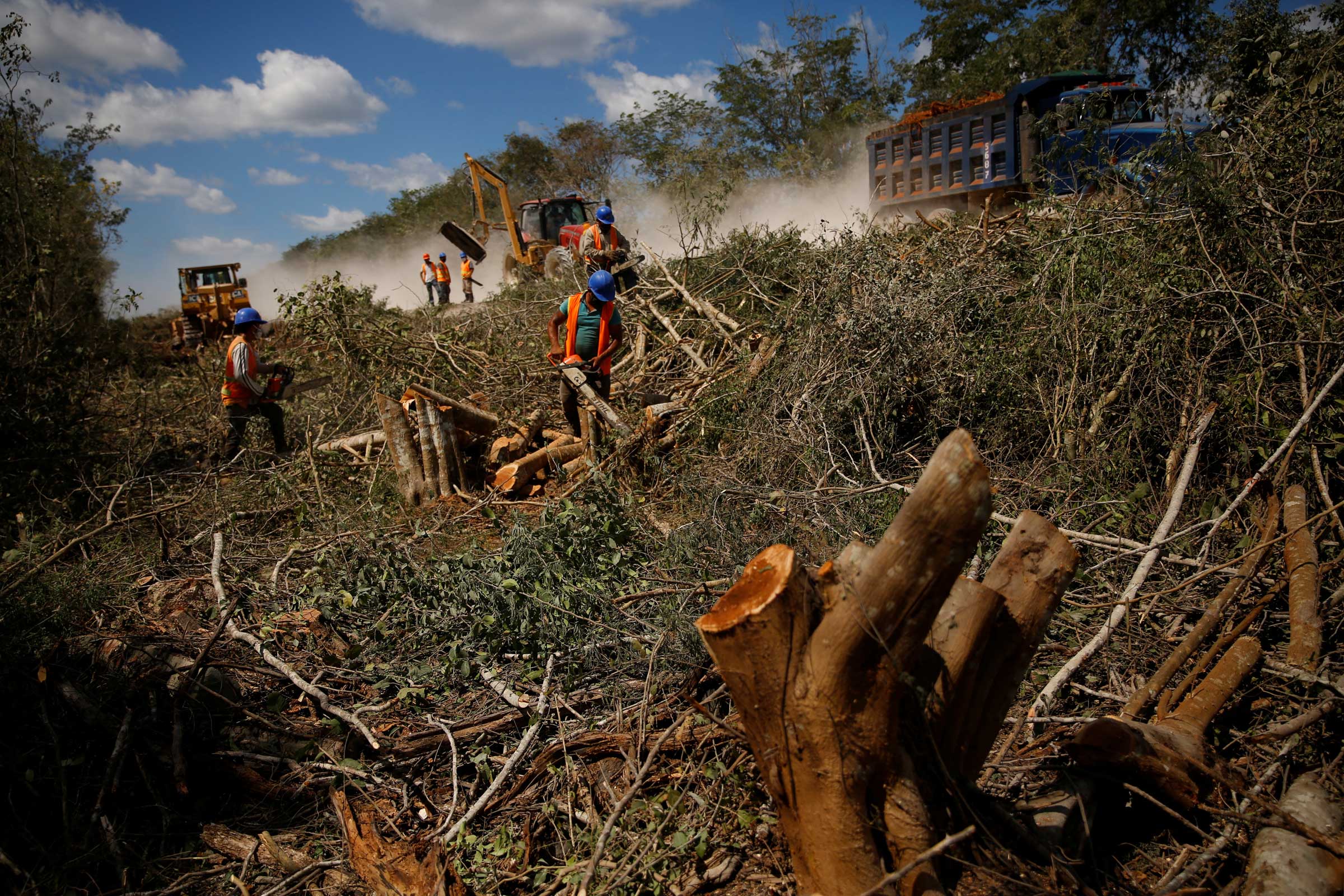
Environmental groups, both nationally and internationally have pointed out the destruction of the eco-system, the structural integrity and the Maya artifacts that are being uncovered. https://mexiconewsdaily.com/news/rare-statue-mayan-god-kawiil-found-maya-train/
![]()
The following is an excerpt from the Cancun Sun (https://thecancunsun.com/maya-train-everything-travelers-need-to-know/) and provides quick facts:
How big is the Maya Train?
The finished railroad will have 1,554 km of track and 34 stations. It will pass through 40 municipalities in five different states, Tabasco, Chiapas, Campeche, Yucatán and Quintana Roo. According to Alstrom, the company contracted to build the trains, the rail line will have 42 trains in operation that can move at a top speed of 176 km/h for passengers and 120 km/h for cargo.
How long will it take?
Construction on the Maya Train started on May 4, 2020, and the railway is projected to begin operations on Dec. 1, 2023. This would mean a construction time of 1,306 days or just under 3 years and 7 months. But this may be optimistic, since in February, only around 460 km of track had been completed , just under 30% of the total.
How much will it cost?
The estimated cost of the project is around 300 billion pesos (US $16.5 billion) nearly 150% more than its original estimate of 120 billion pesos (US $6.6 billion). In 2023, the Maya Train project will be a major expenditure for the López Obrador administration . Nearly the amount it will spend on social welfare programs and about one-third of what it will spend on education. As for ticket prices, these will be calculated per kilometer and are expected to range between 50 pesos per sector for locals and 1,000 pesos for tourists.
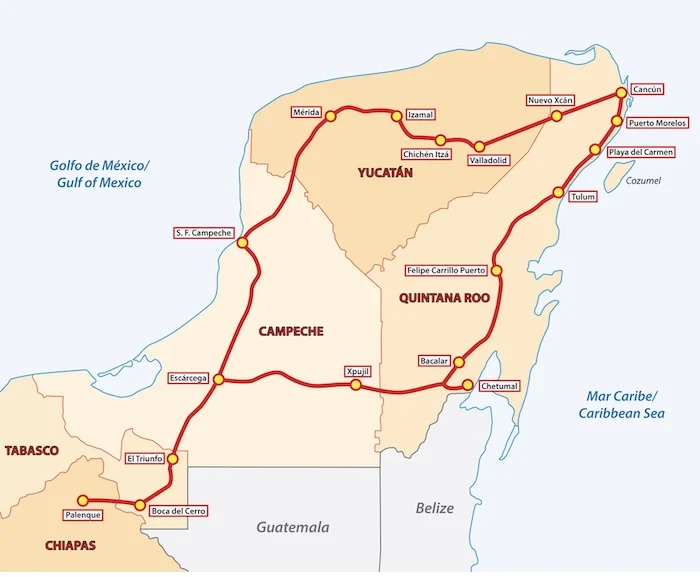
How many people are involved?
The government claims that the Maya Train has already created at least 114,000 jobs in the southeast of Mexico. The company in charge of the project, Tren Maya S.A. de C.V., employs 338 staff, of whom 138 are military personnel. The Defense Ministry (Sedena) announced in February that it would allocate 4,931 National Guard members, 28 drones, 5 helicopters and 3 air bases to provide security to the project.
What is the archaeological impact?
The Maya Train’s construction has been accompanied by a huge project to register and preserve archaeological sites in the affected areas, employing around 500 archaeologists. By March 2023, the National Institute for Anthropology and History (INAH) had registered 46,416 historical dwellings, 1,795 artifacts, 490 skeletons, and 1,261 natural formations such as caves and sinkhole lakes.
What is the environmental and social impact?
The Maya Train has been controversial from the beginning. It has already faced at least 50 lawsuits seeking to stop its construction, according to a statement by made by President Lopez Obrador in February. Most have been brought by environmental organizations and grassroots groups who fear its impact on
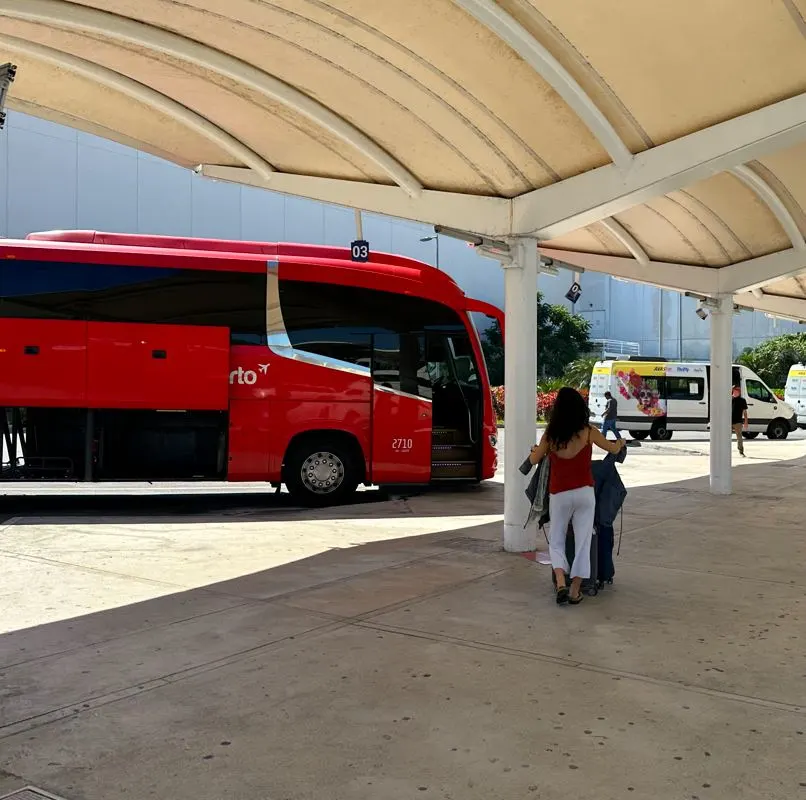
the region’s jungles, wildlife, cenotes (sinkhole lakes) and indigenous communities. The Mexican Center for Environmental Law (CEMDA) says the railroad will affect 13 national protected areas, plus 9 state and municipal natural reserves. 53% of the route runs through communal ejido lands, which could spark social conflict. It could also cause 2,500 hectares of direct deforestation and raise the annual rate of deforestation in the region by a quarter over this decade, according to the Mexican environmental watchdog group Net-Zero Deforestation Observatory. The government claims it will counter this impact through the social and environmental program Sembrando Vida (Sowing Life), which plans to reforest around 500 million trees in southeast Mexico.
Additionally – there will be transportation – via electric bus – directly from the Cancun airport.
Se prevé que la inauguración del Tren Maya sea en diciembre. Aquí algunos datos breves y enlaces para explorar
Según un artículo publicado en fechas recientes en la revista TIME, el muy debatido tema del Tren Maya, por no exagerar, ya ha costado a los contribuyentes más de 20 mil millones de dólares; esto es más del triple de lo que originalmente se proyectó, y continúa aumentando. La Península de Yucatán es el sitio que alberga la mayor cantidad de cenotes subterráneos con agua dulce en el mundo, así como templos arqueológicos mayas que aún no han sido explorados y es una zona donde hay un ecosistema muy frágil. https://time.com/6245748/maya-train-tulum-yucatan-indigenous-people-land/

Grupos ecologistas tanto nacionales como internacionales han puesto de manifiesto la destrucción del ecosistema, la integridad estructural y los artefactos mayas que han sido hallados.
El siguiente es un extracto del Cancun Sun (https://thecancunsun.com/maya-train-everything-travelers-need-to-know/) y presenta algunos datos:
¿Qué extensión tiene el Tren Maya?
Una vez concluido, el ferrocarril tendrá 1,554 km de vías y 34 estaciones. Atravesará 40 municipios de cinco Estados: Tabasco, Chiapas, Campeche, Yucatán y Quintana Roo. Según Alstrom, la empresa contratada para construir los trenes, la línea contará con 42 trenes en operación que podrán circular a una velocidad máxima de 176 km/h para pasajeros y 120 km/h para carga.
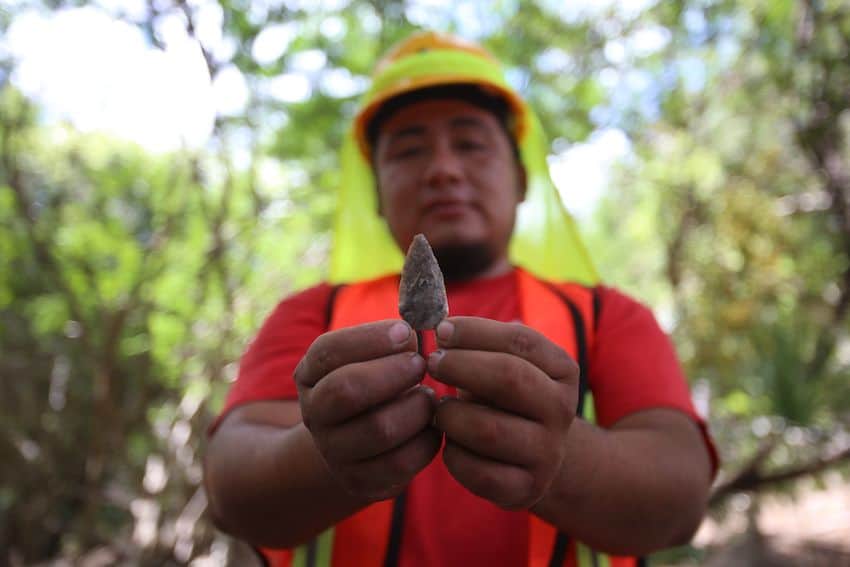
¿Cuánto se tardará?
La construcción del Tren Maya comenzó el 4 de mayo de 2020, y se prevé que comience a operar el 1º de diciembre de 2023. Esto significa un tiempo de construcción de 1,306 día o poco menos de 3 años y 7 meses. Sin embargo, este cálculo parece ser optimista ya que en febrero sólo se habían concluido 460 kms de la línea, algo menos de 30% del total.
¿Cuánto costará?
El costo estimado el proyecto es de casi 300 mil millones de pesos ($16 mil 500 millones de dólares estadounidenses), casi 150% más del estimado original de 120 mil millones de pesos ($6 mil 600 millones de dólares estadounidenses). En 2023 el proyecto del Tren Maya será uno de los principales gastos de la administración de López Obrador. Es casi el monto que se destinará a programas de asistencia social y alrededor de un tercio de lo que se gastará en educación. En cuanto a los precios de los boletos, éstos se calcularán de acuerdo con los kilómetros y se espera que oscilen entre 50 pesos por tramo para los locales y1,000 pesos para los turistas.
Rare statue of Mayan god K’awiil discovered on Maya Train route
¿Cuántas personas participan?
El gobierno afirma que el Tren Maya ya ha creado al menos 114,000 empleos en el sureste mexicano. La empresa encargada del proyecto, Tren Maya, S.A. de C.V., emplea a 338 personas de las cuales 138 son miliares. En febrero, la Secretaría de la Defensa Nacional (Sedena) informó que asignaría a 4,931 elementos de la Guardia Nacional, 28 drones, 5 helicópteros y 3 bases aéreas para brindar seguridad al proyecto.
¿Cuál es el impacto arqueológico?
La construcción del Tren Maya ha estado acompañada de un enorme proyecto de registro y conservación de sitios arqueológicos, en el cual trabajan alrededor de 500 arqueólogos. Hasta marzo de 2023, el Instituto nacional de Antropología e Historia (INAH) había registrado 46,416 asentamientos históricos, 1,795 artefactos, 490 esqueletos y 1,261 formaciones naturales como lo son las cuevas y cenotes.
¿Cuál es el impacto medioambiental y social?
El proyecto del Tren Maya ha sido polémico desde el principio. Según una declaración del presidente López Obrador en febrero, el proyecto ya se ha enfrentado al menos a 50 demandas a través de las cuales se pretende detener su construcción. La mayoría han sido interpuestas por organizaciones ecologistas y grupos populares que temen el impacto que tendrá sobre la selva, la fauna, los cenotes y las comunidades indígenas de la región. El Centro Mexicano de Derecho Ambiental, A.C. (CEMDA) sostiene que el tren afectará 13 áreas protegidas nacionales, además de 9 reservas naturales estatales y municipales. Algo que puede desencadenar conflictos sociales es que 53% del trayecto atraviesa por tierras ejidales. De acuerdo con el Observatorio de Deforestación Neta Cero, un grupo mexicano dedicado a la protección del medio ambiente, el tren también podría generar la deforestación directa de 2,500 hectáreas y aumentar la tasa anual de deforestación de la región en una cuarta parte durante esta década. El gobierno asegura que contrarrestará este impacto mediante el programa social y medioambiental llamado Sembrando Vida a través del cual se planea la reforestación con alrededor de 500 millones de árboles en el sureste mexicano.
Además, se contará con transporte en autobús eléctrico directamente desde el aeropuerto de Cancún.
Electric Minibus Will Make Getting To The Maya Train From Cancun Airport A Breeze
______________________________
Una ex yanqui de Connecticut quien llama hogar a Cozumel desde hace más de 15 años. Laura escapó al Caribe hace años, desplazándose de una isla a otra dando clases de BUCEO. Se dedicó a perder el tiempo en Jamaica y finalmente se detuvo en Cozumel para pasar unas vacaciones de 2 semanas que aún no terminan. Convenciendo a sus padres que pagaran una elegante universidad privada, obtuvo su título en Periodismo y Laura crea semanalmente Cozumel 4You, medios sociales y artículos promocionales sobre la Isla y también es moderadora en el grupo Cozumel 4 You en Facebook que actualmente cuenta con 25,000 miembros. Fabián, s umuy tolerante marido, desde hace mucho tiempo se resignó a no tener vida privada, pues se ha visto implicado en los diversos proyectos y planes que urde Laura. Son orgullosos padres de diversos perros y gatos rescatados. Mientras contempla su paso a través de la vida en el Caribe mexicano,Laura continúa siendo la pesadilla en la existencia de su muy tradicional suegra mexicana.
- Cozumel Museum - April 25, 2025
- Feria Cedral Schedule - April 25, 2025
- Cozumel Home Security Systems - April 25, 2025
An ex-Connecticut Yankee who has called Cozumel home for over 18 years, Laura ran away to the Caribbean years ago, bumped around the islands teaching SCUBA diving, lost some time in Jamaica, and finally stopped in Cozumel for a 2 week vacation that hasn’t ended yet. With a degree in Journalism from a fancy private college she convinced her parents to pay for, Laura writes, edits, and creates the weekly Cozumel 4 You news, social media, and promotional articles about the island, as well as moderates the Cozumel 4 You Facebook group, which currently has over 25,000 members. Her long suffering husband, Fabian, has long since resigned himself to having zero private life, as he’s been involved in her various schemes and plots since his arrival. Proud parents to a variety of rescue dogs and cats, Laura continues to be the bane of her traditional Mexican mother-in-law’s existence, as she muses her way through life in the Mexican Caribbean. ______________________________ Una ex yanqui de Connecticut quien llama hogar a Cozumel desde hace más de 15 años. Laura escapó al Caribe hace años, desplazándose de una isla a otra dando clases de BUCEO. Se dedicó a perder el tiempo en Jamaica y finalmente se detuvo en Cozumel para pasar unas vacaciones de 2 semanas que aún no terminan. Convenciendo a sus padres que pagaran una elegante universidad privada, obtuvo su título en Periodismo y Laura crea semanalmente Cozumel 4You, medios sociales y artículos promocionales sobre la Isla y también es moderadora en el grupo Cozumel 4 You en Facebook que actualmente cuenta con 25,000 miembros. Fabián, s umuy tolerante marido, desde hace mucho tiempo se resignó a no tener vida privada, pues se ha visto implicado en los diversos proyectos y planes que urde Laura. Son orgullosos padres de diversos perros y gatos rescatados. Mientras contempla su paso a través de la vida en el Caribe mexicano, Laura continúa siendo la pesadilla en la existencia de su muy tradicional suegra mexicana.
Cozumel Upcoming Events
Cozumel Upcoming Events Cozumel Prepares to Celebrate Biodiversity at the Emerald Hummingbird...
Cozumel Traditions
Cozumel Traditions Discover the Authentic Traditions of Cozumel Island Text & Translation...
Cozumel Civil Protection Easter Week
Cozumel Civil Protection Easter Week Cozumel Civil Protection Readies for Semana Santa/Easter...
Three Cozumel topics that may be of interest
Three Cozumel topics that may be of interest Three Cozumel topics...










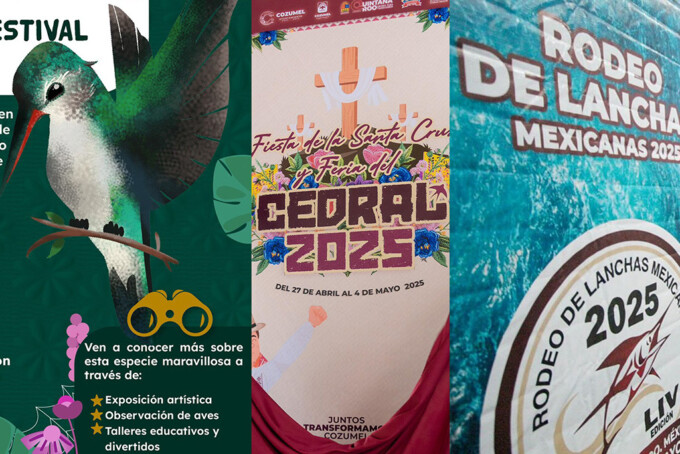

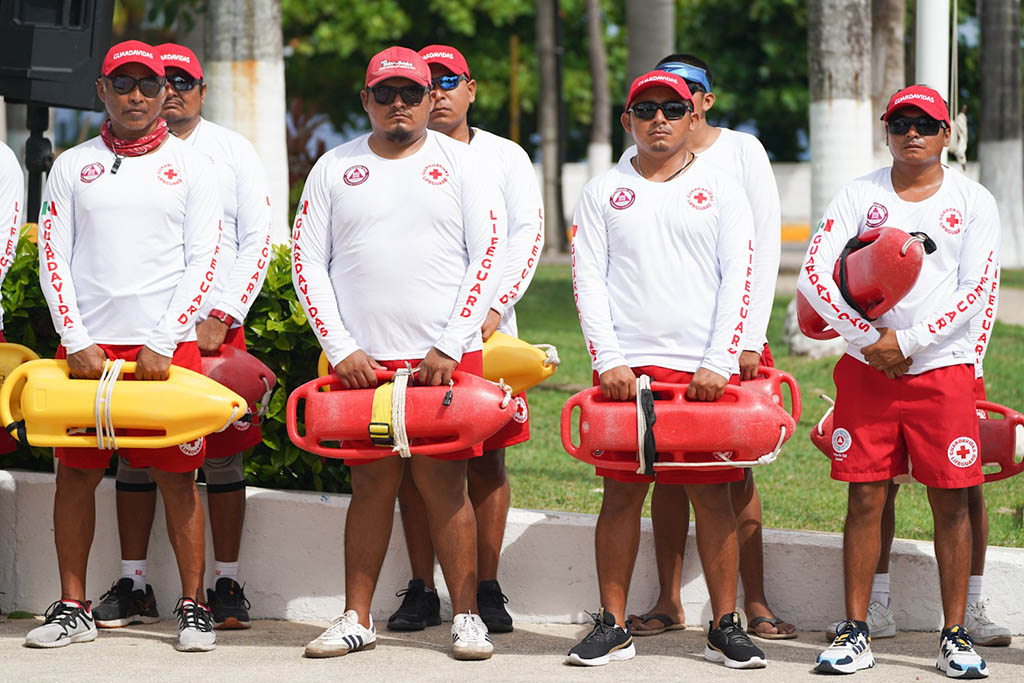
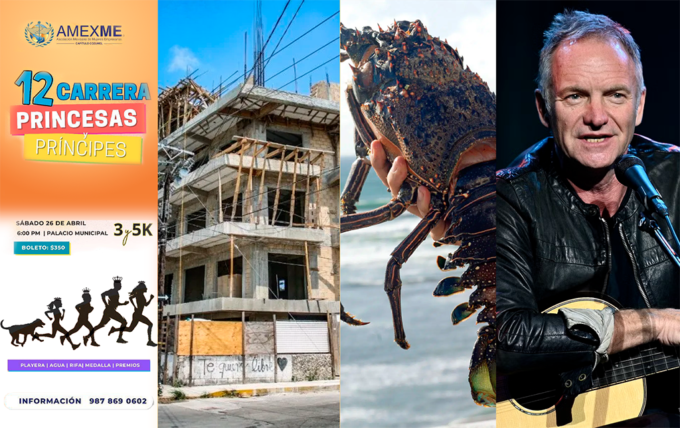







Leave a comment